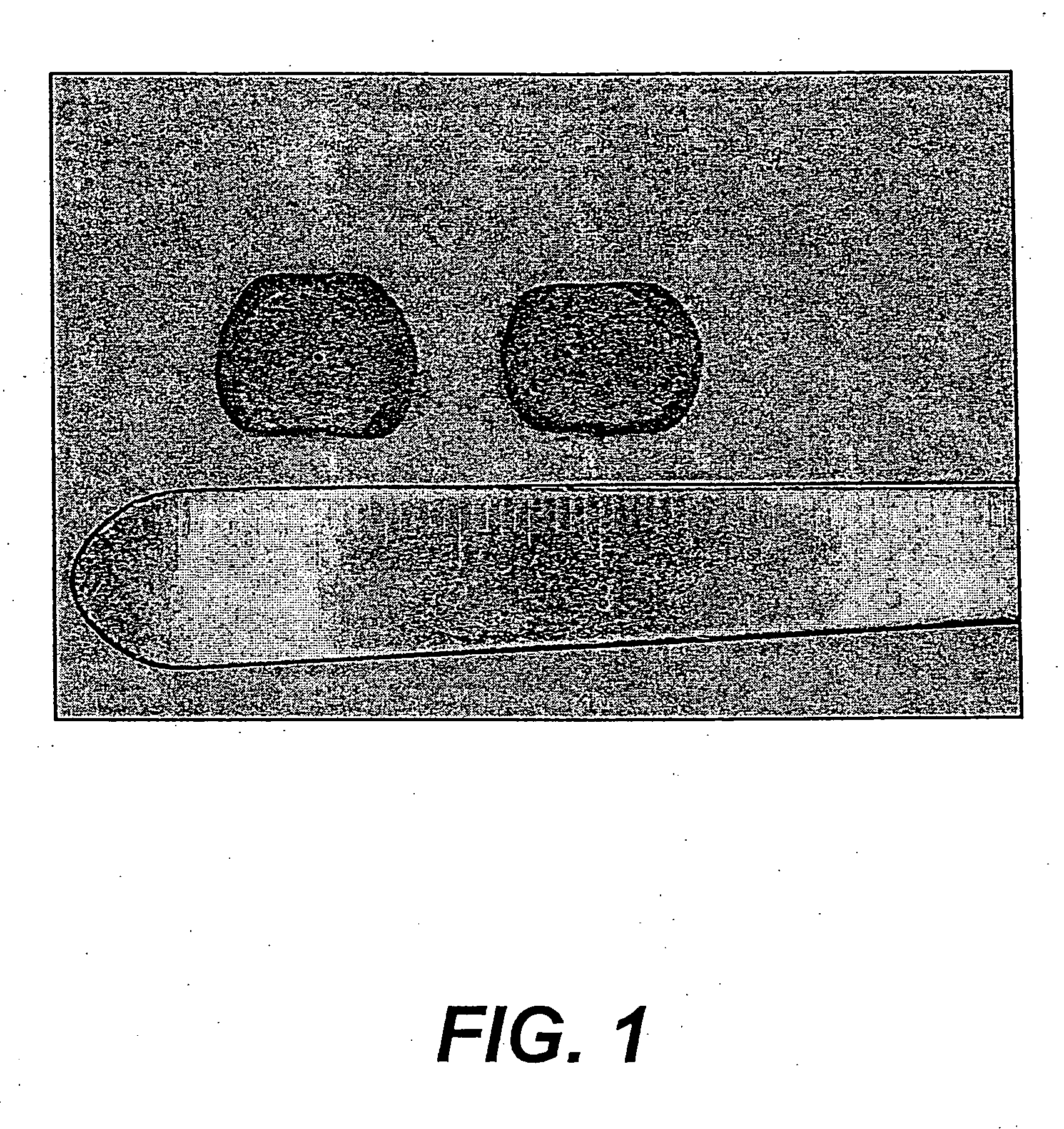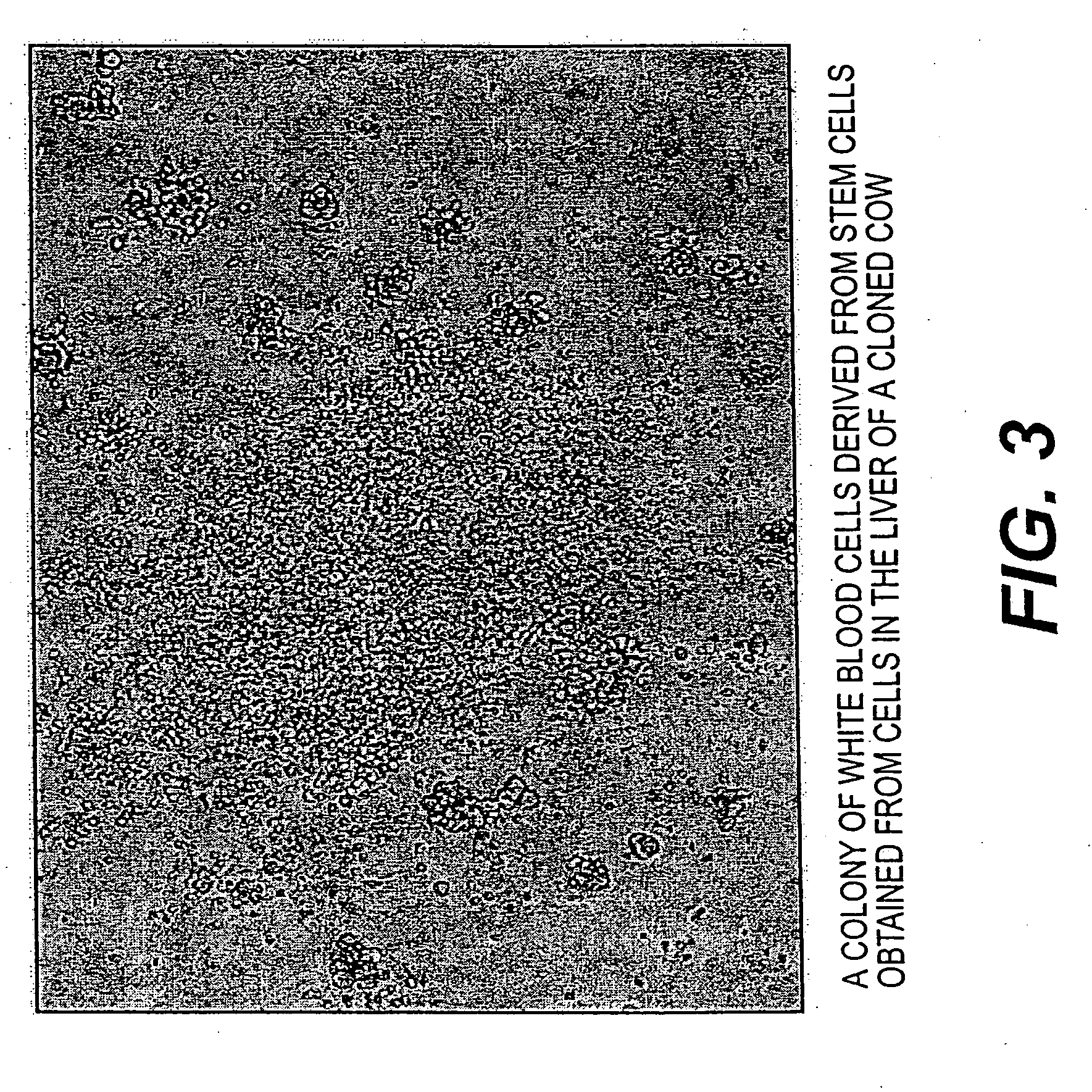Method for facilitating the production of differentiated cell types and tissues from embryonic and adult pluripotent and multipotent cells
a multi-potent, embryonic and adult technology, applied in the direction of embryonic cells, artificial cell constructs, skeletal/connective tissue cells, etc., to achieve the effect of facilitating the production of specific differentiated cell types and tissues and facilitating replacement cells
- Summary
- Abstract
- Description
- Claims
- Application Information
AI Technical Summary
Benefits of technology
Problems solved by technology
Method used
Image
Examples
example 1
[0085] This experiment is designed to test the developmental potential of chimeric c.ell and tissue mixtures in an immunocomprised animal. This example is relevant to the methods whereby pluripotent stem cells may be mixed with allogeneic or xenogeneic cells or tissues, and implanted or injected into a SCID mouse or other immunocomprised animal in order to generate differentiated cells and tissues, e.g., for transplantation or replacement tissue.
[0086] First, the development of ES cells and ICM cells alone without being mixed were tested for teratoma formation following injection in the hind leg of SCID mice. ES cells tranfected with GFP were derived from two adult Holstein steers (two different ES cell lines were derived from each animal). ICMs were derived from twelve-day-old blastocysts. No more than about 100 cells each, in no more than 200 microliters each, were loaded into a 1-ml syringe. ICMs were mechanically isolated and loaded into a 1 ml syringe in a volume of 100 to 150...
example 2
[0098] This experiment is designed to test the developmental potential of chimeric cell and tissue mixtures in a tolerized animal (sheep).
[0099] A developing sheep does not begin to develop self-recognition until the age of 60 days (continuing to about 85 days), so it is possible to introduce human cells before about day 55 to 60 and have the animal be tolerized to human cells that are implanted at a later time. Thereafter, the human cells may be differentiate without adverse immune response, even until the end of term, i.e., 145 days for sheep. Such a strategy is particular useful for implanting c ells into organs or organ environments that are not suitably formed until after the development of self recognition, i.e., the thymic environment.
[0100] To demonstrate this utility, different combinations of chimeric allogeneic and xenogeneic cell and tissues mixtures will be implanted or injected into different sites in an intrauterine sheep fetus at different times during development,...
example 3
[0103] In another experiment multiple injections of parthenogenically derived Cyno-1 stem cells (obtained by in vitro parthenogenic activation of an unfertilized Cyno oocyte) were made in the left atrium and the left ventricle of an approximately 3-month old sheep fetus. In this experiment a total of 0.55 CC were used for the cell suspension (because of the way that Cyno-1 cells are harvested and grown on a feeder layer it was not feasible to make an exact cell count, however it is estimated that this suspension contained several million cells.
[0104] During this experiment the heart was beating and as a result some of the cell suspension escaped (oozed) into the surrounding thoracic cavity. It was discovered on surgical inspection of the thoracic cavity six weeks after injection of said primate stem cells that large discs of bone had formed and were free-floating in the thoracic cavity. (This can be seen in FIGS. 1 and 2). These results clearly establish that the thoracic-environme...
PUM
 Login to View More
Login to View More Abstract
Description
Claims
Application Information
 Login to View More
Login to View More - R&D
- Intellectual Property
- Life Sciences
- Materials
- Tech Scout
- Unparalleled Data Quality
- Higher Quality Content
- 60% Fewer Hallucinations
Browse by: Latest US Patents, China's latest patents, Technical Efficacy Thesaurus, Application Domain, Technology Topic, Popular Technical Reports.
© 2025 PatSnap. All rights reserved.Legal|Privacy policy|Modern Slavery Act Transparency Statement|Sitemap|About US| Contact US: help@patsnap.com



